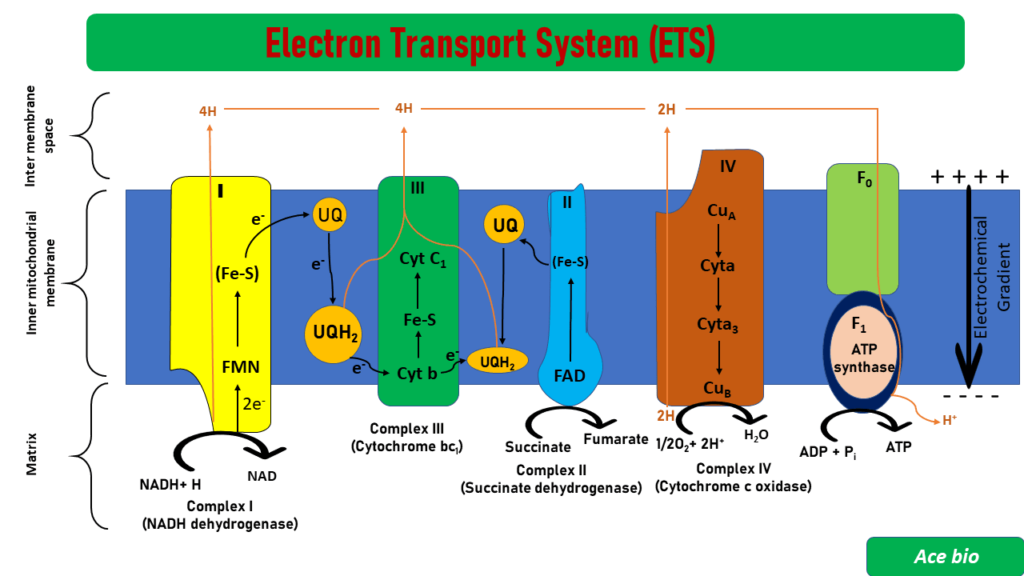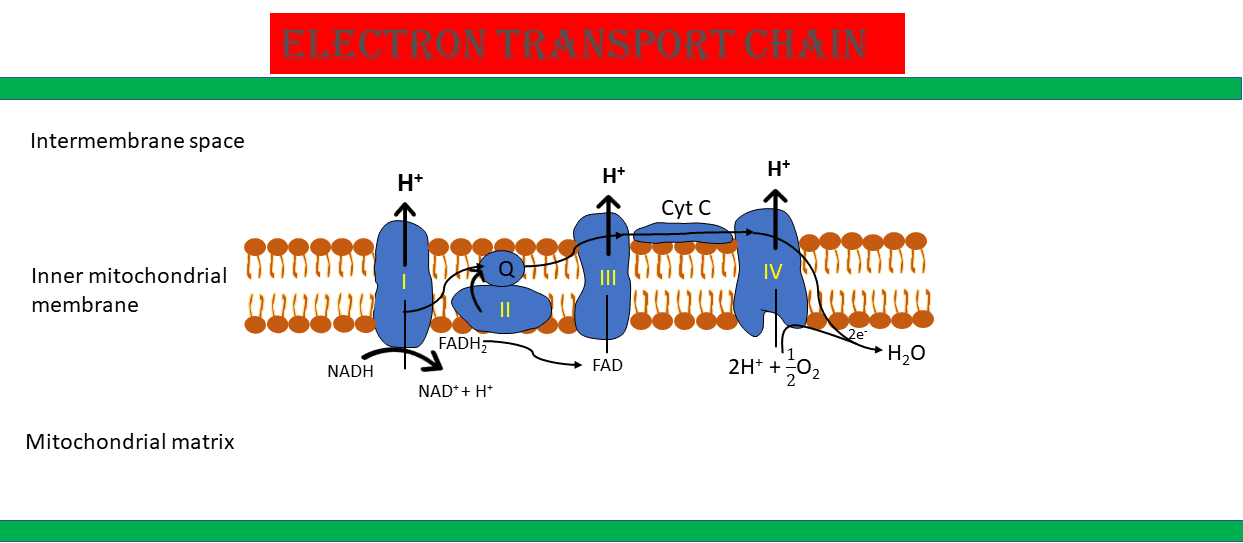Oxidative phosphorylation process is a key part of cellular respiration, and yields most of the ATP in aerobic organisms by Electron transport chain steps (ETC).
Information provided in this article covers all the events that occur in the electron transport chain and there is a flowchart included to help in understand process.
What is the Electron Transport Chain?
Basically the Electron Transport Chain (ETC) is a mechanism through which cells generate ATP (Adenosine Triphosphate).
The system of electron phosphotransfer is the electron transport chain of proteins and other molecules situated in the inner mitochondrial membrane.
It is very essential in the process of cellular respiration through which facilitating electron transfer from the electron donors to the electron acceptors through the process of redox reactions.
This procedure builds a proton gradient that propels ATP production.
Steps of the Electron Transport Chain
1. Electron Donation
It starts from the oxidation of NADH and FADH2 which are by products of other stages in cellular respiration for instance glycolysis and the citric acid cycle.
These molecules give high energy electrons to the electron transport chain.
2. Complex I: NADH Dehydrogenase
Electron Transfer
Electrons are given to Complex I or NADH dehydrogenase from NADH and passes on the ubiquinone or CoQ.
This process also moves protons (H+) out of the mitochondrial matrix into the intermembrane space thereby establishing a proton gradient.
3. Complex II: Succinate Dehydrogenase
Electron Transfer
FADH2 transfers electrons to succinate dehydrogenase which is in complex II.
Complex II also passes the electrons to ubiquinone (CoQ) , but this complex does not transport protons.
4. Ubiquinone (CoQ)
Electron Shuttle
Ubiquinone receives electrons from both The first Complex I, and the Second complex II and delivers them to the Third complex III also known as the cytochrome c reductase.
5. Complex III: Cytchrome c Reductase
Electron Transfer
Complex III takes electron from ubiquinone and passes it to cytochrome c and this complex is involed in generating a proton gradient by pumping protons to the intermembrane space.
6. Cytochrome c
Electron Shuttle
Cytochrome c receives electrons from Complex III and delivered it to Complex IV (cytochrome c oxidase)
7. Complex IV: Cytochrome c Oxidase
Final Electron Transfer
Complex IV binds with cytochrome c and receives the electron, and passes it to the final acceptor which is oxygen.
Finally, oxygen reacts with protons and you get water with the completed electron transport chain.
8. ATP Synthesis
Proton Gradient
The proton gradient generated by the electron transport chain powers the production of ATP
Protons also return to the matrix through ATP synthase to make ATP from ADP and inorganic phosphate.
Flowchart of the Electron Transport Chain Steps

1. NADH/FADH2→ Complex I/Complex II
2. Complex I/Complex II → Ubiquinone (CoQ)
3. Ubiquinone (CoQ) → Complex III
4. Complex III → Cytochrome c
5. Cytochrome c → Complex IV
6. Complex IV → Oxygen (Final Electron Acceptor)
7. Oxygen + Protons → Water
8. Proton Gradient → ATP Synthase → ATP Production
Conclusion
Knowledge on the electron transport chain and its stages is critical when it comes to comprehension of the procedures that cells use to produce ATP through aerobic respiration.
The organization of this topic can be complex, but the flowchart offered helps articulate the topic concisely with specifics on electron movement through different complexes and its general relation to ATP production.
More readings and diagrams would help the reader gain further understanding regarding the concepts given in this brief expose.
For a more detailed overview and concise notes on PLANT PHYSIOLOGY, including key concepts point wise to increase your understanding check out our digital product here. Our short notes for class 11 and 12 are designed to help you excel in your biology studies and ace your exams.
FAQ
What is the role of the Electron Transport Chain (ETC) in cellular respiration?
The Electron Transport Chain is crucial in cellular respiration as it is responsible for producing most of the ATP in aerobic organisms. It achieves this by facilitating electron transfer through a series of complexes, ultimately generating a proton gradient that drives ATP synthesis.
How does the Electron Transport Chain create a proton gradient?
The proton gradient is established as electrons move through various complexes in the electron transport chain. Specifically, as electrons are transferred, protons are pumped from the mitochondrial matrix into the intermembrane space, creating the gradient necessary for ATP production.
What are the main steps involved in the Electron Transport Chain?
The Electron Transport Chain involves several key steps: electron donation from NADH and FADH2 , electron transfer through Complexes I-IV, the creation of a proton gradient, and the final synthesis of ATP via ATP synthase.
Why is oxygen important in the Electron Transport Chain?
Oxygen acts as the final electron acceptor in the Electron Transport Chain. It binds with electrons and protons to form water, completing the chain and allowing the process of ATP synthesis to continue.
How does the flowchart help in understanding the Electron Transport Chain?
The flowchart simplifies the complex process of the Electron Transport Chain by visually mapping out each step, from electron donation to ATP production, making it easier to follow and understand the sequence of events involved in ATP synthesis.
